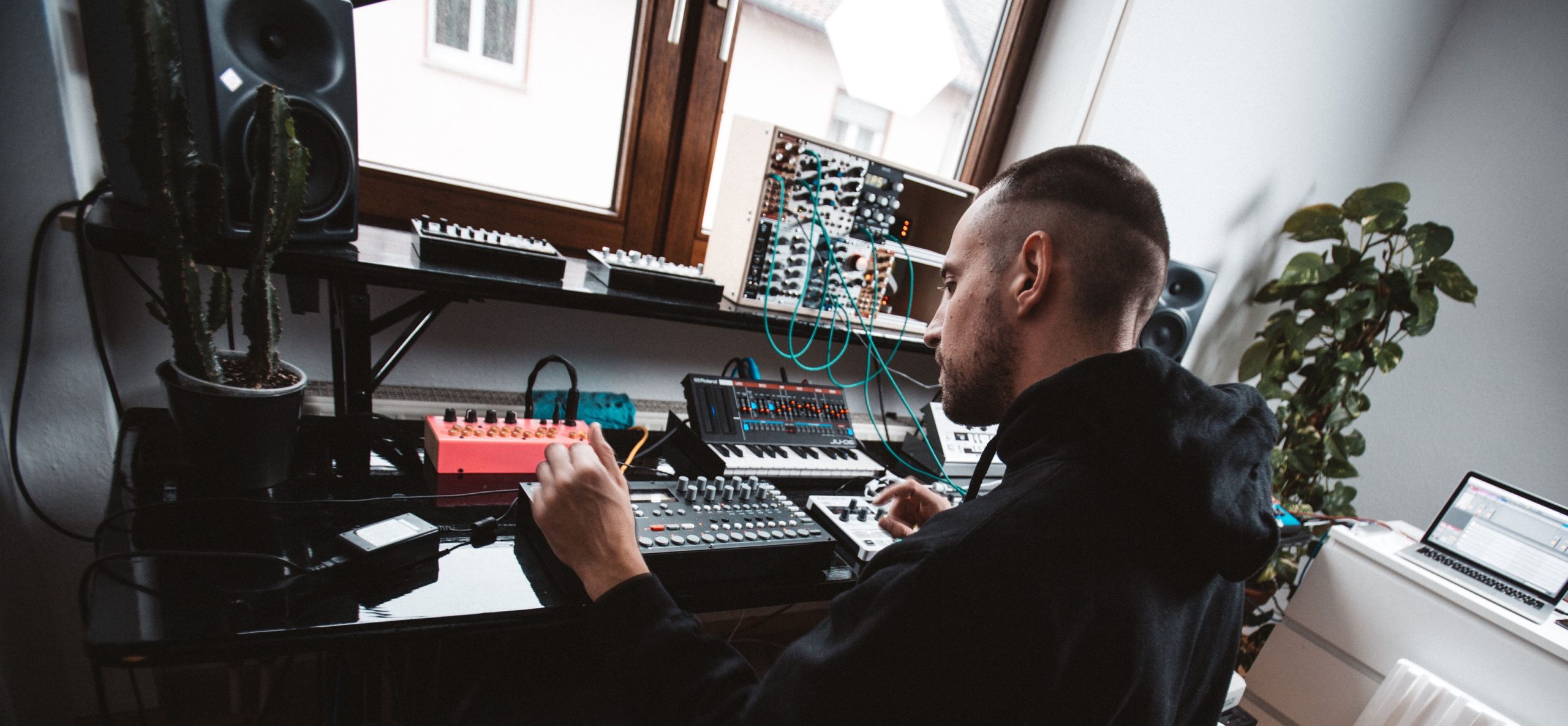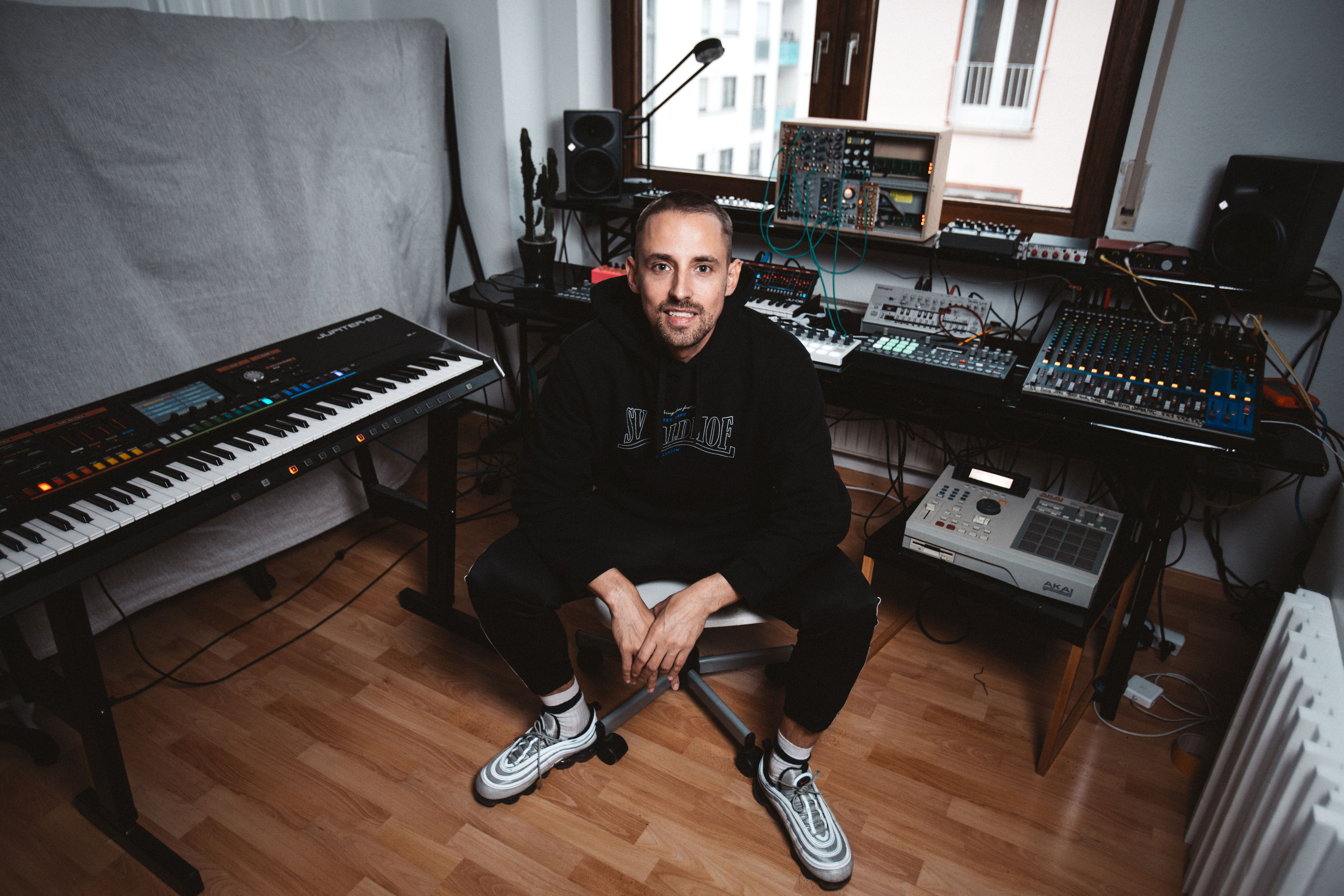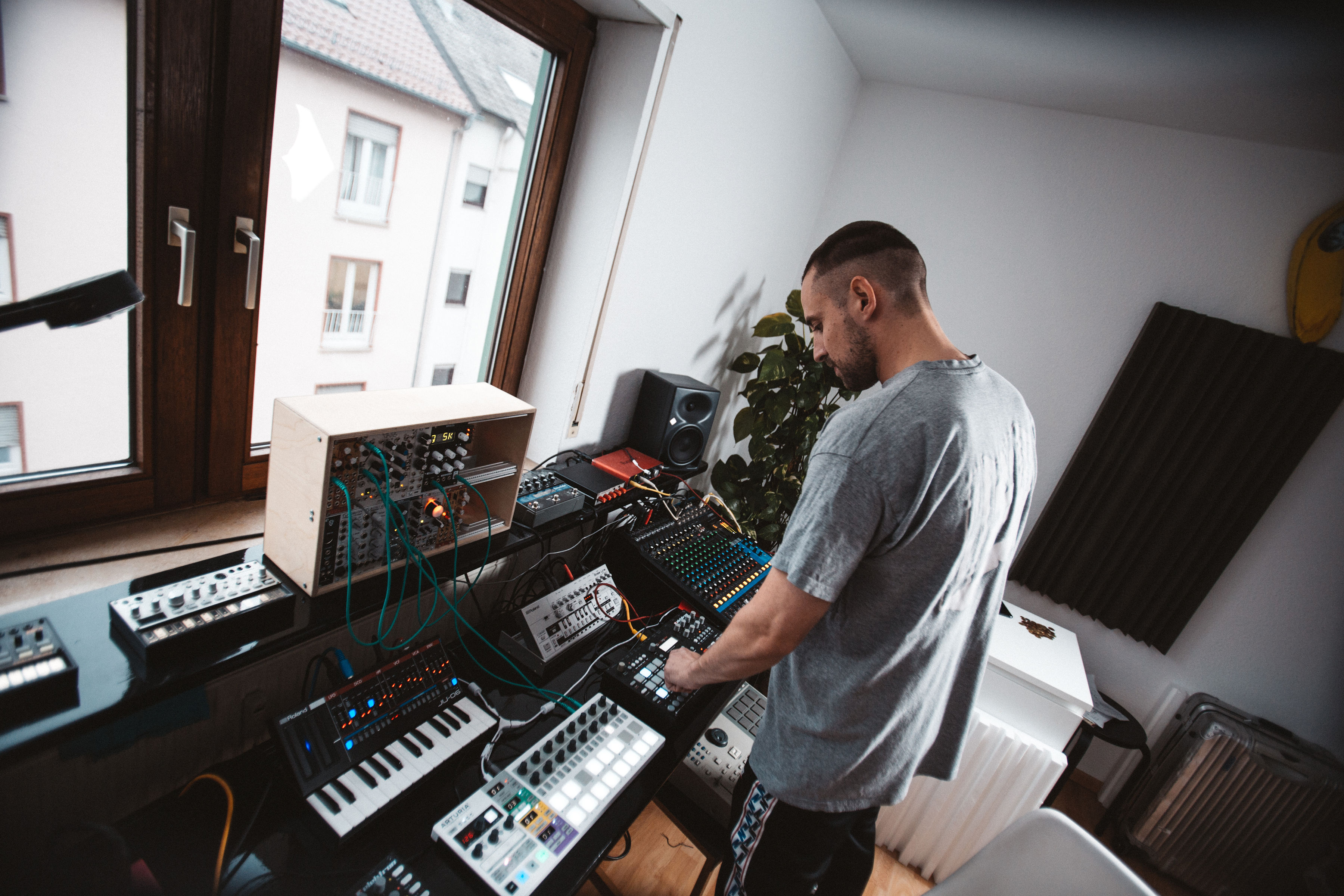Artist Tips: Fabe
Fabian Winkels reveals his secrets.

Artist Tips: Fabe
Fabian Winkels reveals his secrets.
Few house and techno artists achieve as much groove as Fabe, the alias of Mannheim, Germany-born Fabian Winkels. Winkels’ roots lie in ’90s hip-hop but it wasn’t long before he was embedded in the realms of minimal techno, sparking a release schedule that is nothing short of prolific. His sound is light and often funky, intricate and intelligent; he’s one of those artists whose productions can be distinguished among a sea of imitations. “Hoch Wie Nie,” premiered via XLR8R, is a track that stands out, but his swelling discography is full of gems that receive plenty of play-time without ever being in your face. The platform for much of his work is his own Salty Nuts, founded in 2016, where he recently dropped Water Tower, an album debut that touches on hip-hop-influenced beats, low-slung minimal, New York house, and much more. In support of the album, Winkels offered to reveal some production tips based on his processes.
First of all, I want to say it’s not my aim to tell people how to make music because music sounds different to everybody. Nobody knows how music sounds to the ears of the person next to you. So I can just tell you what helped make it fun for me to make music, and how to get results that sound and feel good to me. Here is my whole idea of producing.
Learn to Utilize Your Tools Properly
I don‘t think it‘s important to buy certain gear to achieve a good sound. I know a lot of people who already produce great stuff just by using a computer with plugins. I guess first it is more important to know how a synthesizer works. For example, get to know how the parameters of an envelope generator—Attack, Decay, Sustain, and Release—are working together. There are a lot of good YouTubers who can help a lot, as I discuss below. I just found this one from the blog Reverb. Just have a look around, because I’ve found that this is the only way you’re going to be able to design musical ideas that are in your head; otherwise you’ll have no other options than presets and samples.
And once you familiarise yourself with this type of synthesis, then you can go further down the rabbit hole to modular, for example, and you will understand what you do. This is even more fun and more productive. Tweaking knobs randomly will make you bored and can be annoying because you will probably not achieve that sound you hoped for. For some artists, this comes easily, just by practice. For others, I recommend a book called The Synthesizer, where you get shown everything you have to know about sound design, visually and theoretically. I can tell you it’s not high mathematics and is very easy to understand.
If you really want to learn something in times like today, it couldn‘t be easier because there are so many sources on the internet. Check out YouTube bloggers like “Cuckoo,” who taught me everything about the Elektron machines in two weeks just by watching his channel. Maybe this is not fun for everybody, looking for musical instructions; and you must always be careful to source out stuff that is really important for your own ideas of music and not just replicating the ideas of others. I’d suggest using these channels for learning the basics; everything else in terms of art should develop naturally.

Do Your Own Thing
I think too many artists focus too much on replicating the sound of others. For example, there are extensive threads on the internet where people discuss how to achieve the sound of a Ricardo Villalobos bass drum. But there will always be only one original and listeners will know that. So you should work on your own signature and own sound-picture.
This may sound obvious, but it’s amazing how many people don’t really do it. With this in mind, you should not be influenced too much by the market or by any sound that is currently very popular. People’s tastes are always changing and I think it’s foolish to focus on creating a sound to match something you cannot control. Instead, try putting your own personality inside your productions. Always just follow your own mood and feeling, or your instinct. I mean, this is not easy; this is about art, but it‘s the only way that makes sense to me. You should believe in yourself, and trust in bringing your own personality and musical tastes to the people, and letting them feel music in a different way than before.
You should always be looking for original ways to process sound. For example, go study the sounds of classic drum machines like the 909, 808, 707, 727, Korg Electribes, or the older Boss machines and pull out the samples/one-shots you really like or feel most and add them to a sampler, like the Oktatrack or the RYTM from Elektron, or even a software sampler. You can find those sample one-shots—often for free on the internet—recorded on tape or filtered through samplers like the MPC or the dry versions. You can also record them from the originals if you own one of these classic machines. I’ve added all my favorite drum sounds to my Elektron RYTM and built my own 16-pad kits. With a machine like the Elektron RYTM, you have the possibility to shape and process classic drum hits in an advanced way which means you can tune every sound, changing start and end points, adding overdrive, delay, or reverb effects, or by using the internal filter.
If you are more into sound design and don’t want to use drum samples, I recommend the analog drum engines of the Elektron RYTM. Take some classic drum voices like the 808 bass drum as an idea and get used to what you have learned about the Envelops and shape your very own version of an 808-type bass drum.
Everything I’ve just explained is also possible with plugin samplers, which means there are many other ways to create own sound, but this was an example of how I do it.
There are many ways to go further with processing sound, for example, by running it through external compressors or equalizers. For now, I like running my machines through my mixer on which I use the equalizer and the built-in compressor for the final adjustments and from the output of my mixer everything runs into Ableton.
One of my biggest Idols, Falco, an Austrian singer-songwriter, once said there are three things you have to think about as a music artist:
01. Is what you do music?
02. Is it new music?
03. Is it really new music?
I have been following this since I heard it as it sounds logical to me.
There are a lot of producers who know how to make a good track. They also know how to mix and arrange it. However, many of them sound too similar. That is why I sometimes get bored while skipping through demos. Same pads, same mood, same drums, and the same drum patterns. So I can give the advice: take your time to shape your own drums, filtering them in a different way than others or run them through any other gear like guitar pedals or effect units—or try to achieve this with your plugins. Try some stuff and put love into sound shaping and sound design.

Never Forget the Groove
One more very important thing to add when it comes to groove. The groove always goes hand in hand with the mix. If the sound elements are not balanced right, there will be no groove. Even when the pattern you made seems to be groovy. I always try to have every frequency of the song, especially when it comes to drums, only once in the mix. Which means if you want to have two different hi-hats working well together, you should make sure they are on a different frequency range or have different attack starting points or volume levels (tip: gate effect, Ableton). Automating the length and volume on several steps of the pattern can also help in this regard. Applying this can often make the difference between a good track and a great one.

Be Patient
Be patient and listen to your basic loop before adding new elements. When your music sounds muddy, it’s easy to think that adding new parts will fix it but this doesn’t help. If you get bored by anything in your track you will not make it better by adding something to it. Instead, if it feels like the brightness is missing, it is often better to give your elements some drive by using simple effects like reverbs and delays. I’m using an eventide guitar pedal called Timefactor (delay) which is very helpful. It is connected to one of the tracks on my mixer (Yamaha MH16XU) so I can adjust the feedback individually per track before recording into Ableton.
In general, always try to mix and clean up carefully during your session before you have a mess that needs to get balanced but you have no idea where to start. Also, try to minimize the number of audio or MIDI channels in your tracks to be able to create enough room in the stereo field for the essential parts of your song. Less is almost always better when it comes to club-based music.

